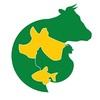Mycotoxin Lesions in the Slaughter House-Broilers
Published: June 22, 2017
Source : Dr. Manuel Contreras, DVM, M.S. , Diplomate ACPV, Veterinary Technical Director.
Special Nutrients
Introduction
Traditionally, the presence of mycotoxins capable of causing damage in animal production has been demonstrated by detecting certain levels in ingredients and / or rations. Since this technique has many limitations, histopathology has been used in many areas to demonstrate that these toxic agents are actually affecting the birds. Here we propose a practical approach to demonstrate their presence in comercial farms. By following this procedure, poultry companies will be able to determine if the mycotoxins identified in the feed are causing damage and if the preventive measures taken (anti mycotoxin feed-additives, mold inhibitors, silo management, etc.) are effective. The following table includes some of the organs that should be evaluated weekly or monthly. It is important to emphasize that even the most efficient mycotoxins binders available in the market will not adsorb one hundred percent of the mycotoxins present in the feed, hence, the detection of some degree of lesions is expected when mycotoxins are present. At least 200 to 300 carcasses should be examined and periodically some tissue samples must be evaluated with histopathology. If possible, the inclusion of the evaluation of the Bursa of Fabricius in the table presented below, will offer important information on the status of the immune system. Besides the organs listed below, the flocks performance must be taken into consideration when evaluating the presence of mycotoxins.


Bruises
Consist on the presence of a minor injury in muscles and / or subcutaneous tissue as a result of the rupture of small vessels (capillaries). The bruise color can indicate if they are recent (deep red, blue or black) or older (greenish or yellowish).
Consist on the presence of a minor injury in muscles and / or subcutaneous tissue as a result of the rupture of small vessels (capillaries). The bruise color can indicate if they are recent (deep red, blue or black) or older (greenish or yellowish).

Oral Lesions
Present in the mouth and identified as mild to severe yellowish or whitish plaques and ulcers located in the palate, tongue, floor of the mouth, salivary ducts openings, and the interior margins of the beak. The healing process will only leave a minor scar tissue remaining in the area affected. In severe cases, necropsy of the tip of the tongue or the whole organ can be present. This lesion is mainly cause by T-2 toxin, DAS, MAS; member of the trichothecenes group of fusarium toxins. HT 2 toxin, a metabolite of T-2 toxin, could be also responsible for this lesion.

Present in the mouth and identified as mild to severe yellowish or whitish plaques and ulcers located in the palate, tongue, floor of the mouth, salivary ducts openings, and the interior margins of the beak. The healing process will only leave a minor scar tissue remaining in the area affected. In severe cases, necropsy of the tip of the tongue or the whole organ can be present. This lesion is mainly cause by T-2 toxin, DAS, MAS; member of the trichothecenes group of fusarium toxins. HT 2 toxin, a metabolite of T-2 toxin, could be also responsible for this lesion.

Proventriculitis / Proventriculosis
Consist on the inflammation or enlargement of the proventriculus. It is associated with higher incidence of Salmonellosis and other zoonosis.
Consist on the inflammation or enlargement of the proventriculus. It is associated with higher incidence of Salmonellosis and other zoonosis.

Gizzard erosion
Characterized by superficial to deep damage to the koilin layer of the gizzard.
Characterized by superficial to deep damage to the koilin layer of the gizzard.

Pale, yellow and / or fatty livers
Usually, the liver of healthy young birds (broilers and pullets) has a brown color with a compact appearance. When mycotoxins are present, the livers appear yellow and / or pale.

Usually, the liver of healthy young birds (broilers and pullets) has a brown color with a compact appearance. When mycotoxins are present, the livers appear yellow and / or pale.

Pale gall bladder content
Generally, aflatoxicosis can cause this type of lesion as a consequence of the damage produced in the liver that impairs its capacity of producing biliary salts with the proper concentration.
Generally, aflatoxicosis can cause this type of lesion as a consequence of the damage produced in the liver that impairs its capacity of producing biliary salts with the proper concentration.

Does your anti-mycotoxin additive meet the basic TOP and FACTS?

Related topics:
Mentioned in this news release:

Recommend
Comment
Share
Soavet
5 de julio de 2017
A very educative public health presentation, worthy of repeated reading.
Congratulations to this author.
Recommend
Reply
Recommend
Reply

7 de julio de 2017
8/7/17,
It is a very informative message about toxins. Thanks to the author.
Recommend
Reply
6 de julio de 2017
Very informative article but there must be some easy and economical, handy instrument so as farmers can easily test at farm level the presence of toxin.
Recommend
Reply
6 de julio de 2017
Very important topic ,thanks for your brief but clear description of various lesions on different parts of the body , which are helpfull for practicing field veterinarin ,where there are no scope to analyze different ingradients of feed & other lab test , here mainly diagnosis depend on gross lesions and give treatment accordingly
Recommend
Reply
6 de julio de 2017
Very informative, brief presentation for poultry farmers to evaluate the feed & other factors for the birds.
Recommend
Reply
Recommend
Reply
Recommend
Reply

Would you like to discuss another topic? Create a new post to engage with experts in the community.
















